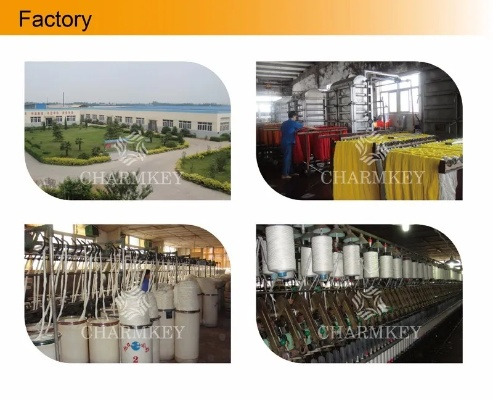The World of Textile Designers:An Insight into the Creative Process
"The World of Textile Designers: An Insight into the Creative Process",Textile designers are artists who use their creativity to create textiles that embody beauty, functionality and innovation. This article explores the creative process of textile designers, highlighting the key steps involved in creating a piece of art from raw materials to finished product. The article begins by introducing the basic principles of textile design, including color theory, pattern making, and construction techniques. It then delves into the creative process, discussing the stages of ideation, sketching, fabrication, and finalization. The article concludes by highlighting the importance of collaboration and communication within the design process, as well as the impact that technology has had on the industry. Overall, this article provides an insightful overview of the creative process behind textile design, offering valuable insights for those who are interested in pursuing a career in this field.
Introduction: Textile design is a fascinating field that combines creativity, technical expertise, and an appreciation for aesthetics. It involves designing patterns, colors, textures, and shapes that enhance the beauty of textiles such as clothing, home decor, and accessories. In this digital age, designers must not only have a deep understanding of traditional techniques but also be adept in utilizing modern tools and technologies to create innovative designs.
Body: Let's delve into the world of textile designers and explore their creative process.

-
Research and Development: Before starting any project, designers often spend weeks or months researching various materials, fabrics, and patterns. They analyze the properties of different fibers, their durability, and how they respond to different treatments. This research helps them understand the limitations and opportunities of each material and informs their design choices.
-
Conceptualization: Once the basic research is complete, designers start brainstorming ideas. They might sketch out initial concepts, discuss them with clients, or work on mock-ups to visualize their designs. This stage is crucial as it lays the foundation for the final product.
-
Sketching and Prototyping: Sketches are essential for textile designers as they help them communicate their ideas clearly and efficiently. They may use pencil, pen, or computer software like Adobe Illustrator to create detailed drawings. Once the concept is finalized, designers begin creating prototypes using physical models or digital simulations. These prototypes serve as a test bed for evaluating the feasibility of the design.
-
Production and Quality Control: Once the design is approved, textile designers work closely with manufacturers to ensure the production process aligns with their vision. They may need to adjust the design during the manufacturing phase based on feedback from the factory. Additionally, quality control measures are implemented to ensure that the final products meet the designer's standards.
-
Marketing and Sales: Finally, designers must consider how to promote their products. They may collaborate with marketing teams to develop branding strategies, social media campaigns, and other promotional activities. The goal is to attract customers and generate sales.
Case Study: One example of a textile designer's creative process can be found in the case of Sarah, a renowned fashion designer who specializes in sustainable textiles. Sarah started her career by studying textile design at a prestigious university. After gaining valuable experience working with various brands, she decided to pursue her passion for sustainability by launching her own line of eco-friendly clothing.

Sarah began her research by exploring different types of organic cotton and silk fibers. She tested various dyes and printing techniques to find the most effective way to showcase these materials without compromising on durability and comfort. During the conceptualization phase, Sarah worked on multiple sketches and prototypes, collaborating with her team to refine the design.
When it came time to produce the final product, Sarah partnered with a small local manufacturer who shared her commitment to sustainability. Together, they created a collection of clothing that not only looked beautiful but also had a positive impact on the environment. Sarah's dedication to quality control and attention to detail ensured that every piece met her high standards.
Finally, Sarah launched her brand through a carefully planned marketing campaign that emphasized the brand's commitment to sustainability. By showcasing her designs on social media and in print ads, Sarah was able to build a loyal customer base and establish herself as a leading figure in the sustainable fashion industry.
Conclusion: The creative process of textile designers is a multifaceted journey that involves research, development, conceptualization, sketching, prototyping, production, quality control, and marketing. Each step is critical in bringing a designer's vision to life. Through Sarah's case study, we can see how dedication and collaboration can lead to groundbreaking designs that not only look good but also make a positive impact on society.
Articles related to the knowledge points of this article:
The Story of XiAn Citys New Districts黛美丝纺织品批发部
Exploring the Global Fabrics of City Wests Textile and Apparel Industry



